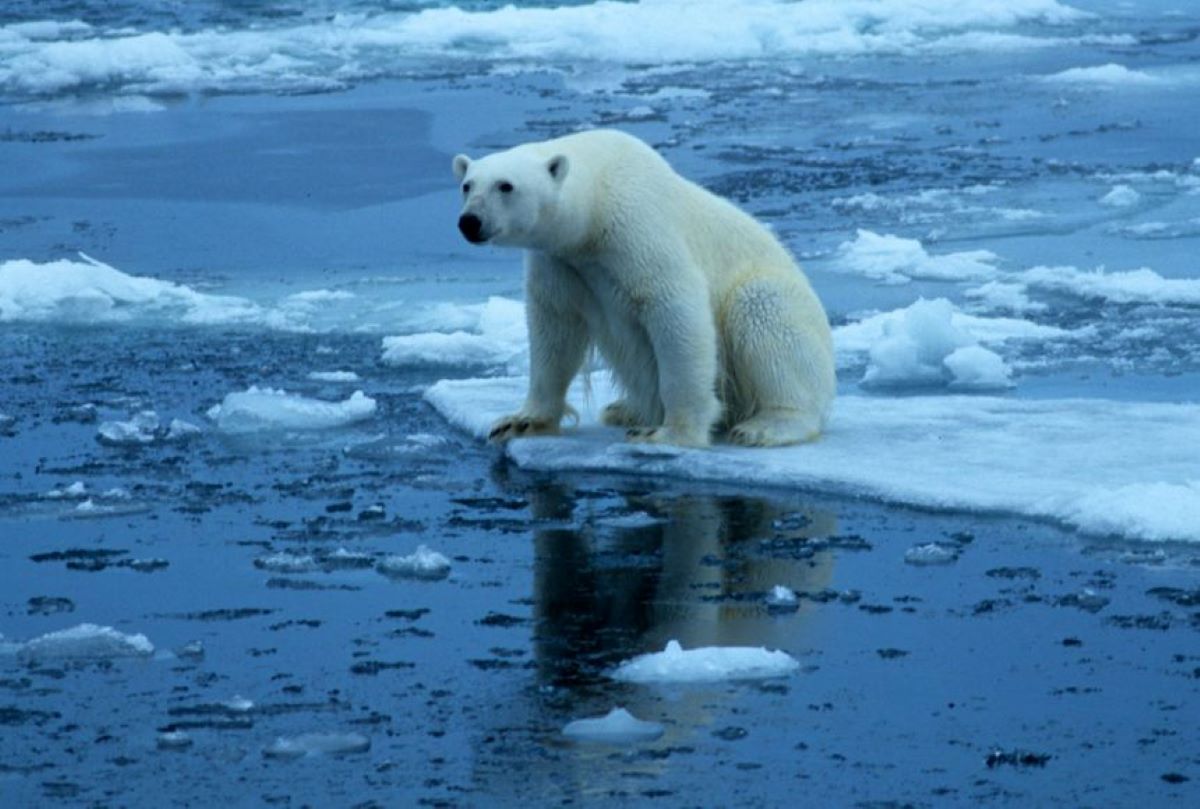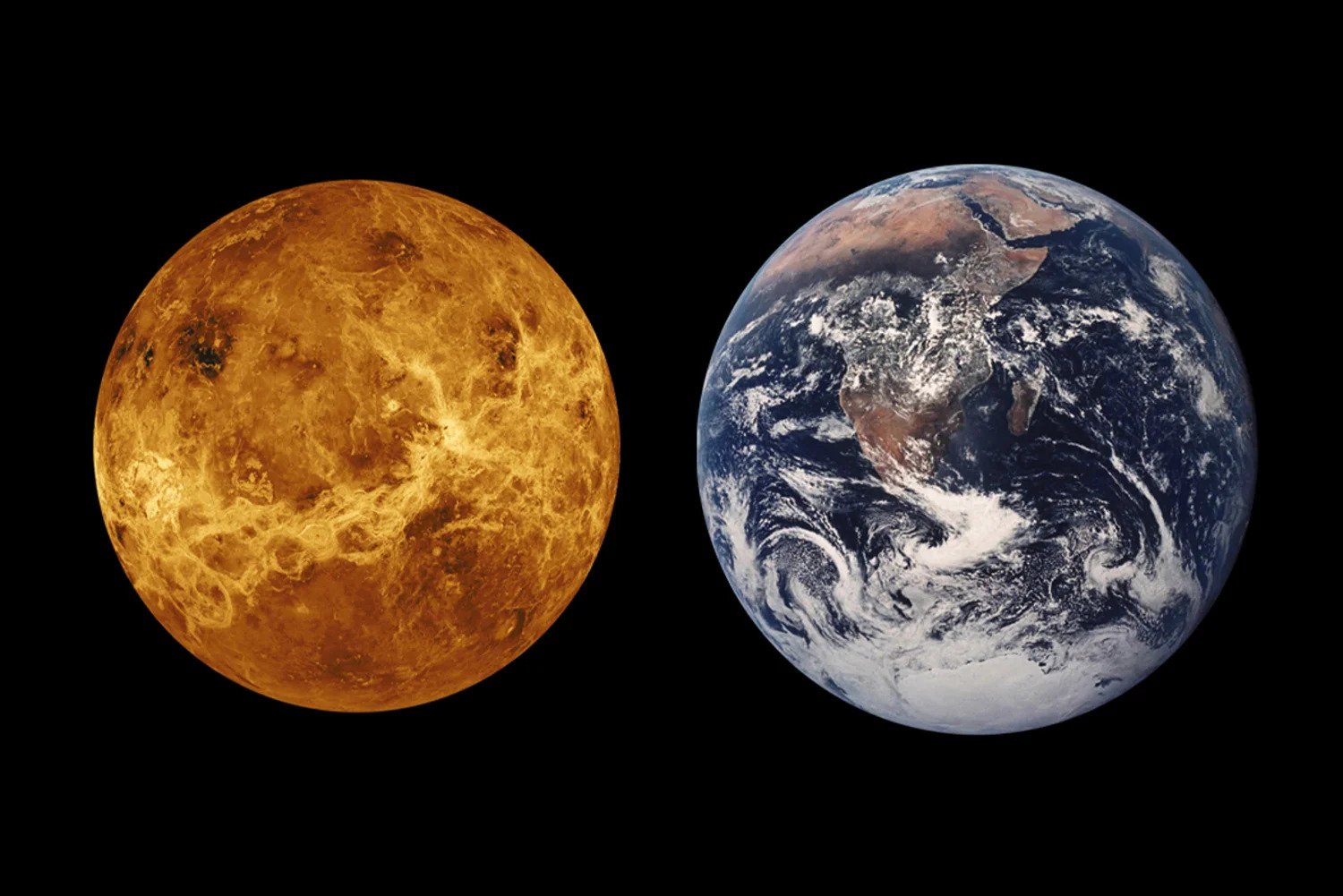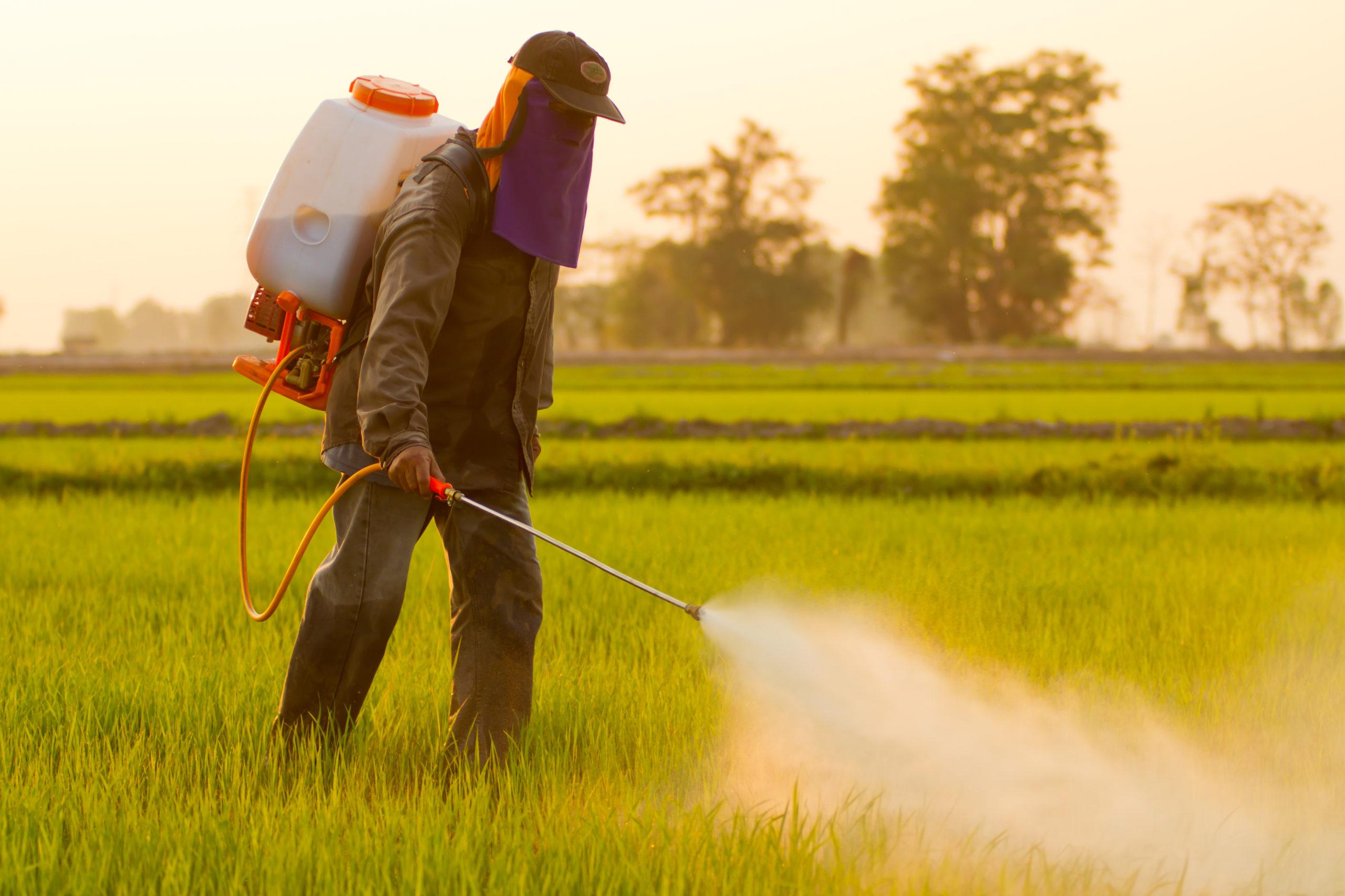Home>Gardening Tips and Tricks>What Would Happen If The Greenhouse Effect Didn’t Exist


Gardening Tips and Tricks
What Would Happen If The Greenhouse Effect Didn’t Exist
Modified: January 22, 2024
Explore the implications of a world without the greenhouse effect. Discover problem-solving approaches to tackle the environmental challenges that arise from its absence.
(Many of the links in this article redirect to a specific reviewed product. Your purchase of these products through affiliate links helps to generate commission for Chicagolandgardening.com, at no extra cost. Learn more)
Table of Contents
Introduction
The greenhouse effect is a natural process that plays a vital role in regulating the temperature of our planet. It is caused by the presence of certain gases in the Earth’s atmosphere, such as carbon dioxide (CO2), methane (CH4), and water vapor, which trap heat from the sun and prevent it from escaping into space. This process is essential for maintaining a habitable environment on Earth, as it helps to keep the planet warm enough to support life.
However, in recent years, there has been growing concern about the intensification of the greenhouse effect due to human activities, particularly the burning of fossil fuels. The excessive release of greenhouse gases into the atmosphere is leading to an enhanced greenhouse effect, often referred to as global warming. This is causing a range of adverse effects on our planet, such as rising temperatures, sea level rise, and changes in weather patterns.
In order to better understand the consequences of the greenhouse effect, it is important to consider what would happen if this natural process did not exist. This hypothetical scenario allows us to explore the crucial role that the greenhouse effect plays in maintaining the balance of Earth’s climate system and safeguarding the conditions necessary for life to thrive.
Definition of the Greenhouse Effect
The greenhouse effect is a natural phenomenon that occurs when certain gases in the Earth’s atmosphere trap heat emitted by the sun and prevent it from escaping back into space. This process is crucial in regulating the temperature of our planet, creating a relatively stable and habitable environment.
When sunlight reaches the Earth’s surface, it warms the land, oceans, and atmosphere. Some of this energy is radiated back into space as infrared radiation. However, certain greenhouse gases, such as carbon dioxide (CO2), methane (CH4), and water vapor, absorb and re-emit some of this outgoing radiation, trapping it in the atmosphere like a “blanket. This trapped heat energy then warms the Earth’s surface, creating a greenhouse-like effect.
The greenhouse effect is a natural and necessary occurrence on Earth. Without it, the average global temperature would be much colder, making the planet uninhabitable. The greenhouse gases act as a kind of insulation, preventing the heat from rapidly escaping into space.
It’s important to note that the greenhouse effect itself is not inherently harmful or dangerous. The problem lies in the intensified greenhouse effect caused by human activities, which has led to an increase in greenhouse gas concentrations. This enhanced greenhouse effect, often referred to as global warming, is causing significant climate changes with potentially disastrous consequences.
Impact of the Greenhouse Effect on Earth’s Climate
The greenhouse effect plays a critical role in shaping Earth’s climate and weather patterns. While it is a natural process, human activities have significantly intensified this effect, leading to profound impacts on our planet.
One of the major consequences of the intensified greenhouse effect is the rise in global temperatures. The increased concentration of greenhouse gases in the atmosphere traps more heat, causing the Earth’s temperature to gradually increase over time. This phenomenon, known as global warming, has been linked to various adverse effects, such as melting glaciers, rising sea levels, and more frequent and severe weather events.
The warming of the planet has led to the melting of polar ice caps and glaciers, resulting in rising sea levels. This poses a significant threat to coastal regions and low-lying islands, increasing the risk of flooding and displacing millions of people. Additionally, as temperatures continue to rise, the severity and frequency of extreme weather events, such as hurricanes, droughts, and heatwaves, are also expected to increase.
Changes in precipitation patterns are another significant impact of the greenhouse effect. As the climate warms, certain regions may experience more frequent and intense rainfall, while others may face longer periods of drought. These changes can have profound impacts on agriculture, water availability, and natural ecosystems, leading to food shortages and ecological disruptions.
The greenhouse effect also influences the circulation patterns of the atmosphere and ocean currents. Changes in these patterns can disrupt weather systems and alter regional climates, causing shifts in temperature, rainfall patterns, and wind patterns. This can have far-reaching impacts on agriculture, ecosystems, and human societies that rely on predictable weather conditions.
Overall, the intensified greenhouse effect is causing significant disruptions to Earth’s climate system. It is imperative that we take concerted action to mitigate the release of greenhouse gases and reduce our carbon footprint to prevent further destabilization of the climate and protect the well-being of future generations.
What Would Happen Without the Greenhouse Effect?
If the greenhouse effect did not exist, the Earth’s climate would be drastically different, and the conditions necessary for life as we know it would not be possible.
The absence of the greenhouse effect would result in a significantly colder planet. Without the greenhouse gases acting as a natural insulating layer, much of the heat from the sun would escape back into space. This would lead to a sharp drop in temperatures, making the Earth inhospitable and uninhabitable for most forms of life.
Without the greenhouse effect, the average global temperature would plummet, causing extreme cold conditions across the planet. This would lead to the freezing of oceans, rivers, and lakes, drastically reducing the availability of liquid water. Such a scenario would have a devastating impact on ecosystems, as many species rely on water for their survival.
In addition to the extreme cold, the absence of the greenhouse effect would cause significant temperature fluctuations between day and night, with temperatures plummeting during the night and rising drastically during the day. This would make it nearly impossible for any life forms to adapt and thrive under such extreme and unpredictable conditions.
The absence of the greenhouse effect would also result in changes in atmospheric composition. Without the presence of greenhouse gases like carbon dioxide, the equilibrium between organic and inorganic carbon in the atmosphere would be disrupted. This would have a profound effect on plant life, as carbon dioxide is essential for photosynthesis. The decrease in carbon dioxide levels would lead to a decline in plant productivity, affecting the entire food chain and causing widespread famine.
Furthermore, the absence of the greenhouse effect would disrupt the natural water cycle. The lack of trapped heat would greatly inhibit the evaporation of water from oceans, lakes, and rivers. This, in turn, would severely limit the formation of clouds and precipitation, resulting in exceptionally dry conditions and desertification of vast areas of land.
Overall, without the greenhouse effect, the Earth would be a cold, barren, and inhospitable planet. The absence of temperature regulation, loss of agricultural productivity, changes in ecosystems, and disruption of the water cycle would make it nearly impossible for life as we know it to exist.
Absence of Temperature Regulation
One of the most significant impacts of the greenhouse effect is its role in regulating the temperature of the Earth. Without this natural process, the absence of temperature regulation would have dire consequences for our planet.
The greenhouse effect acts as a thermal blanket, trapping heat from the sun and preventing it from escaping into space. This helps to maintain a relatively stable and habitable temperature range on Earth. However, without the greenhouse effect, there would be no mechanism to retain heat, resulting in extreme temperature fluctuations.
In the absence of temperature regulation, the Earth would experience extreme cold during the night and scorching heat during the day. The lack of a moderating influence would cause the temperature to drop rapidly during the night, leading to freezing conditions that would make it nearly impossible for life to survive. Conversely, during the day, the absence of temperature regulation would result in intense heat, making it inhospitable for most forms of life.
The absence of temperature regulation would also have a profound impact on weather patterns. Without the greenhouse effect, atmospheric circulation patterns would be disrupted, leading to more extreme and unpredictable weather conditions. This could result in the formation of stronger storms, intense heatwaves, and prolonged periods of cold and drought. The lack of temperature regulation would also make it difficult for ecosystems to adapt and thrive, leading to ecosystem collapse and loss of biodiversity.
Furthermore, the absence of temperature regulation would have severe consequences for the cryosphere, which includes polar ice caps, glaciers, and permafrost. These frozen landscapes play a crucial role in regulating global temperature and sea levels. Without the greenhouse effect, these ice formations would rapidly melt, resulting in a significant rise in sea levels and the loss of critical habitats for many species.
Overall, the absence of temperature regulation due to the lack of the greenhouse effect would lead to extreme temperature fluctuations, disrupting weather patterns and endangering the delicate balance of ecosystems. It highlights the critical role that the greenhouse effect plays in maintaining a habitable climate on Earth.
Loss of Agricultural Productivity
The greenhouse effect plays a crucial role in supporting agricultural productivity, as it helps to create the optimal conditions for plant growth and development. Without the greenhouse effect, the loss of temperature regulation would have a significant impact on agricultural productivity worldwide.
Temperature plays a vital role in determining the growth and yield of crops. Different crops have specific temperature requirements for optimal growth, and the greenhouse effect helps to maintain these temperature ranges. In the absence of temperature regulation, the extreme temperature fluctuations would make it challenging for crops to thrive.
Extreme cold during the night would damage and kill crops, leading to significant losses in agricultural production. Frost and freezing temperatures can cause plants to wilt, affecting their ability to absorb nutrients and water. Additionally, the extreme cold can damage plant cells, affecting their overall health and reducing their yield potential.
Conversely, the scorching heat during the day would lead to heat stress in plants. High temperatures can cause wilting, reduced photosynthesis, and damage to plant tissues. This would further impact the productivity of crops and could lead to crop failures. Moreover, the lack of temperature regulation would exacerbate the impacts of heatwaves and droughts, further deteriorating agricultural productivity.
The absence of the greenhouse effect would also disrupt the water cycle, leading to changes in precipitation patterns. Reduced availability of water, especially in arid regions, would severely limit agricultural activities. Irrigation systems, which rely on a stable supply of water, would be greatly affected, resulting in reduced crop yields and increased water scarcity.
The loss of agricultural productivity would have far-reaching consequences for food security and global economies. With a decreasing supply of food, we would face challenges in feeding the growing global population. This could lead to famine, malnutrition, and social unrest.
Additionally, the loss of agricultural productivity would also impact the livelihoods of millions of farmers worldwide. Farmers heavily rely on agriculture for their income and livelihood. Without the ability to grow crops successfully, their economic stability would be severely compromised.
Overall, the loss of agricultural productivity due to the absence of the greenhouse effect would have significant implications for both food security and the socio-economic well-being of individuals and communities around the world. It highlights the critical importance of understanding and addressing the impacts of climate change on agricultural systems.
Changes in Ecosystems
The greenhouse effect plays a crucial role in maintaining the delicate balance of ecosystems worldwide. Without this natural process, the absence of temperature regulation and other associated impacts would lead to significant changes in ecosystems.
Temperature is a major driver of ecosystem dynamics. Different species have specific temperature preferences for survival, reproduction, and other life processes. The absence of temperature regulation would disrupt these temperature preferences, making it challenging for many species to adapt and survive.
Extreme temperature fluctuations would disrupt the timing of biological events, such as flowering, migration, and hibernation. This could lead to a mismatch between species that rely on specific cues for their life cycles, such as the timing of blooming flowers and the arrival of pollinators. Disruptions in these interactions could have cascading effects throughout the food chain.
Furthermore, changes in temperature would impact the distribution and composition of plant communities. Some plant species may struggle to survive in the extreme temperature conditions, leading to shifts in the composition of ecosystems. This, in turn, would affect the availability of food and habitat for other organisms, leading to changes in species interactions and potential population declines.
The absence of temperature regulation would also affect the physiology and behavior of organisms. Many species have adapted to specific temperature ranges, and deviations from these optimal ranges can significantly impact their growth, reproduction, and overall fitness. Some organisms may show reduced activity levels, altered breeding patterns, or struggling to find suitable habitats, which can ultimately lead to population declines or even local extinctions.
In addition to temperature, the loss of the greenhouse effect would also impact other factors crucial for ecosystem function, such as precipitation and water availability. Changes in the water cycle would lead to shifts in the distribution of water-dependent organisms, affecting wetlands, rivers, and other aquatic ecosystems. These changes would have significant implications for aquatic species, including fish, amphibians, and various water-dependent plants.
Overall, the absence of the greenhouse effect would have profound effects on ecosystems, disrupting species interactions, altering community composition, and impacting the overall functioning and biodiversity of ecosystems. The delicate balance that exists in natural environments would be greatly disturbed, potentially leading to ecosystem degradation and the loss of valuable ecosystem services.
Effects on Sea Levels and Glacial Melting
The greenhouse effect plays a significant role in regulating the Earth’s climate and protecting the integrity of ice masses, such as glaciers and polar ice caps. Without the greenhouse effect, the absence of temperature regulation would have profound consequences for sea levels and the melting of these frozen landscapes.
Glacial melting is a natural process that occurs when the temperature of glacial surfaces exceeds the melting point of ice. The greenhouse effect helps to regulate the temperature, preventing excessive melting. However, without this regulation, the rate of glacial melting would increase dramatically.
In the absence of the greenhouse effect, glaciers and polar ice caps would experience accelerated melting. This would contribute to the rise in global sea levels, posing significant threats to coastal regions and low-lying areas. As the ice melts, the water is added to the oceans, causing them to expand and encroach further onto land.
Rising sea levels would lead to the loss of coastal habitats, increased coastal erosion, and the displacement of millions of people living in vulnerable areas. Coastal cities and communities would be at a heightened risk of flooding and damage from storm surges. Additionally, saltwater intrusion into coastal freshwater sources would threaten agriculture, water supplies, and ecosystems.
The absence of the greenhouse effect would also impact ice shelves, which are extensions of glaciers that float on the ocean’s surface. Without temperature regulation, these ice shelves would experience increased melting from both above and below. The collapse of ice shelves can accelerate the flow of glaciers into the ocean, contributing to the rise in sea levels even further.
Furthermore, the loss of the greenhouse effect would disrupt the balance of ocean currents and temperatures. The melting of ice masses plays a critical role in driving global ocean circulation patterns. The changes in temperature and salinity resulting from the increased melting could alter these currents, impacting marine ecosystems and the distribution of marine species.
The rise in sea levels and the melting of ice masses also have implications for those living in regions dependent on snowpack and ice melt for freshwater supplies. Many communities rely on these water sources for drinking water, agriculture, and hydropower. The loss of these sources would have severe consequences for their livelihoods and overall water security.
Overall, the absence of the greenhouse effect would lead to accelerated glacial melting, rising sea levels, and significant disruptions to coastal regions and freshwater systems. The impacts would be far-reaching, affecting both human societies and the delicate balance of marine and coastal ecosystems.
Conclusion
The greenhouse effect is a fundamental natural process that plays a critical role in regulating the Earth’s climate and maintaining a habitable environment. It helps to trap heat from the sun, preventing it from escaping back into space. However, the intensification of the greenhouse effect due to human activities has led to detrimental consequences, such as global warming, rising sea levels, and extreme weather events.
Understanding the hypothetical scenario of a world without the greenhouse effect highlights its immense importance. Without this natural process, the Earth would be subjected to extreme temperature fluctuations, making it inhospitable for most forms of life. The loss of temperature regulation would disrupt ecosystems, leading to species extinctions and changes in biodiversity.
Furthermore, the absence of the greenhouse effect would impact agricultural productivity, causing food shortages and threatening the livelihoods of millions of farmers. Changes in precipitation patterns and water availability would exacerbate water scarcity and further challenge the ability to sustain agricultural systems.
Additionally, the melting of glaciers and polar ice caps would increase at an alarming rate, resulting in rising sea levels. Coastal communities would be especially vulnerable to flooding and coastal erosion, leading to displacement and economic losses.
The hypothetical scenario of a world without the greenhouse effect serves as a stark reminder of the value and importance of tackling climate change. It highlights the urgency for collective action to reduce greenhouse gas emissions, transition to cleaner energy sources, and develop sustainable practices.
By addressing the underlying causes of the intensified greenhouse effect, we have the potential to mitigate the adverse impacts and safeguard the future of our planet. It is crucial that we prioritize sustainable and environmentally responsible actions to ensure a stable and habitable climate for current and future generations.






